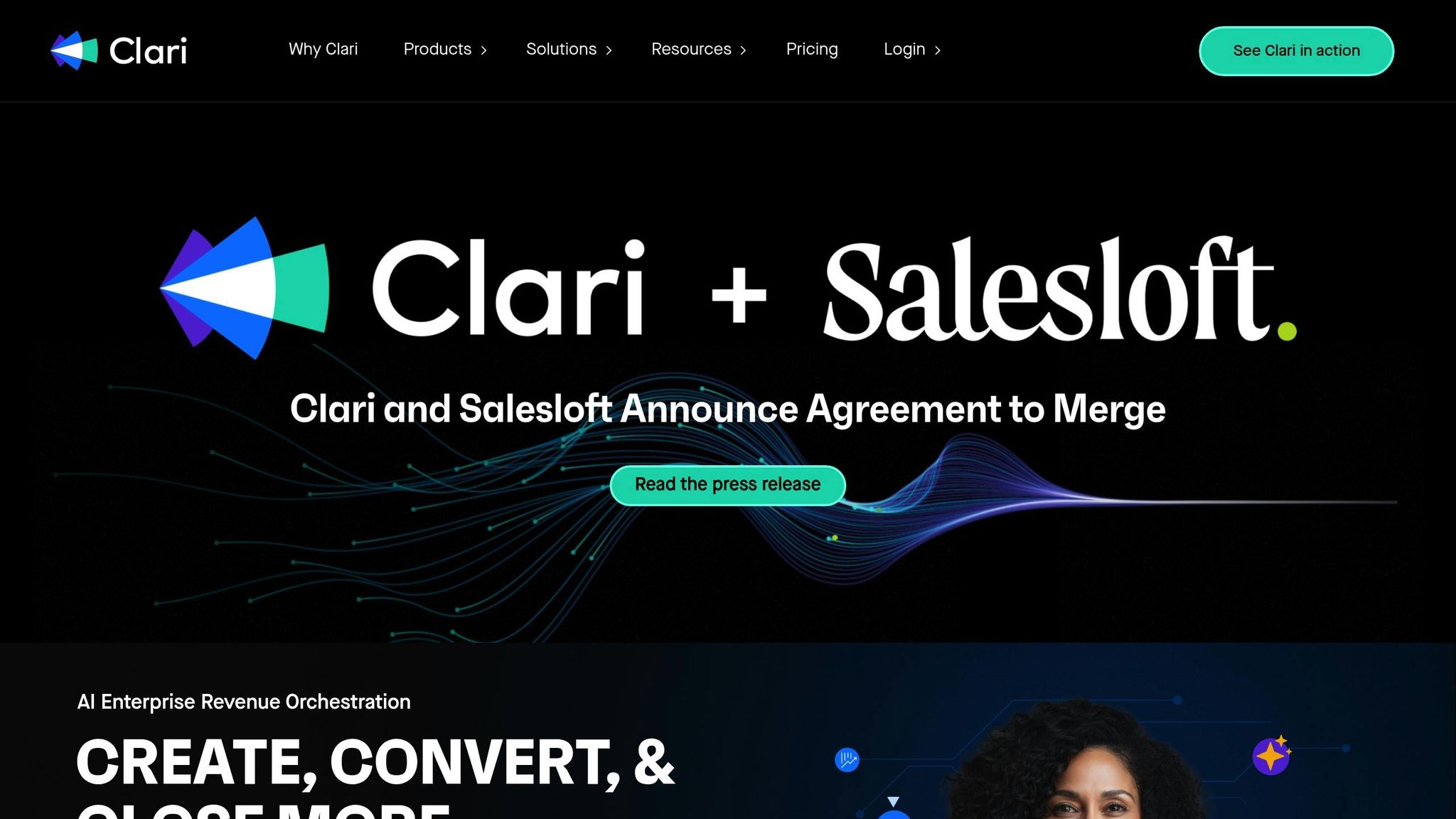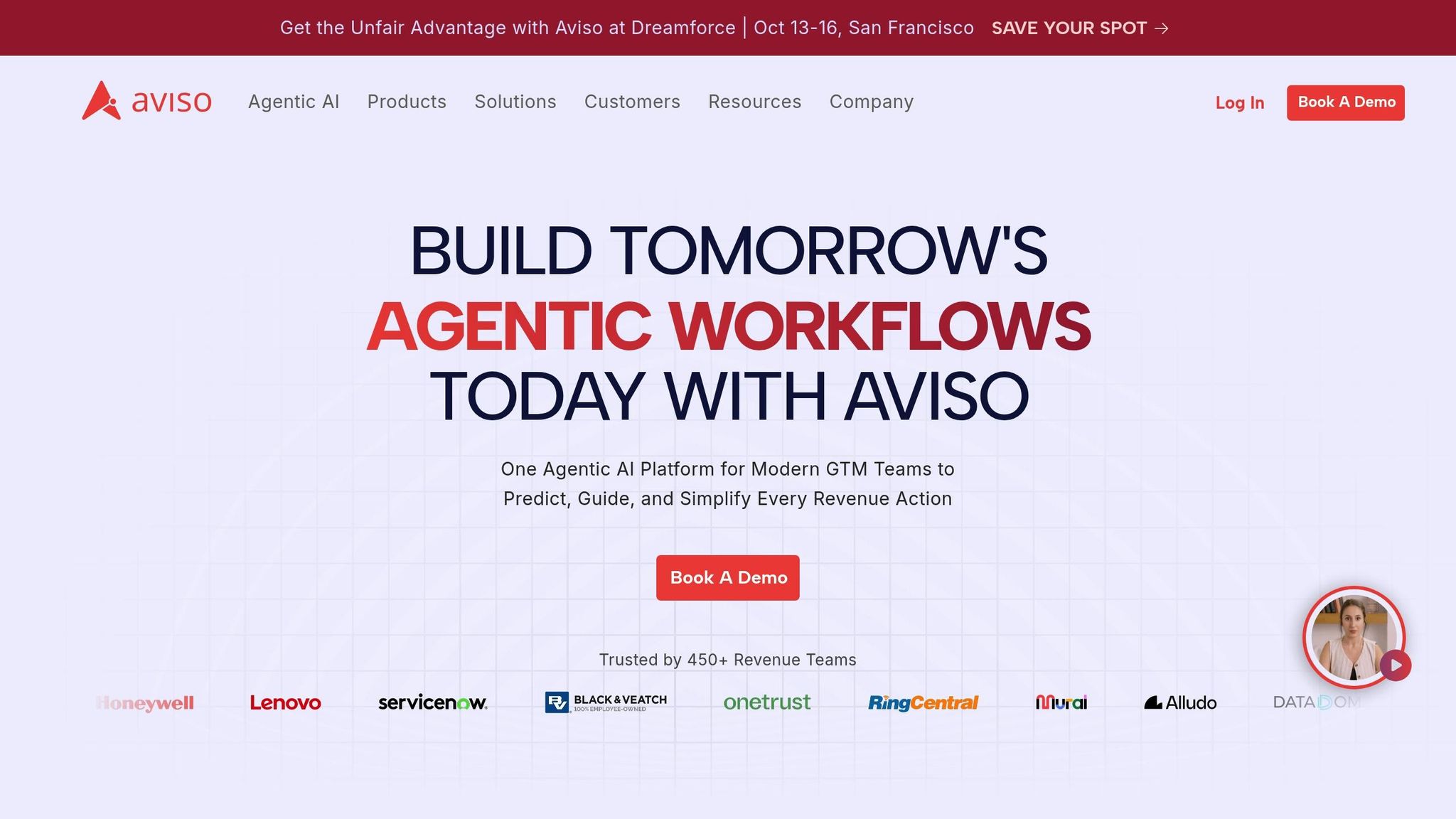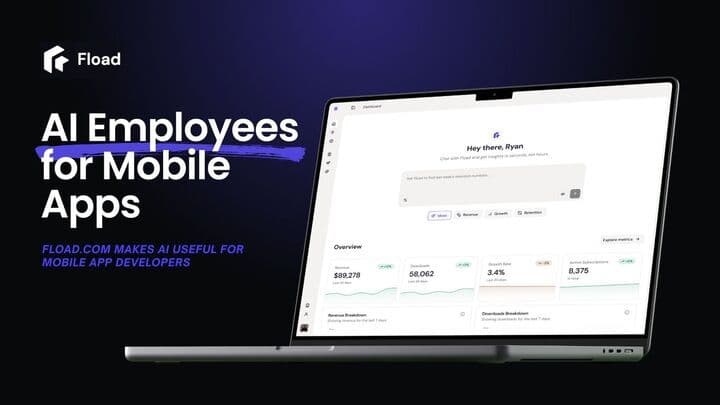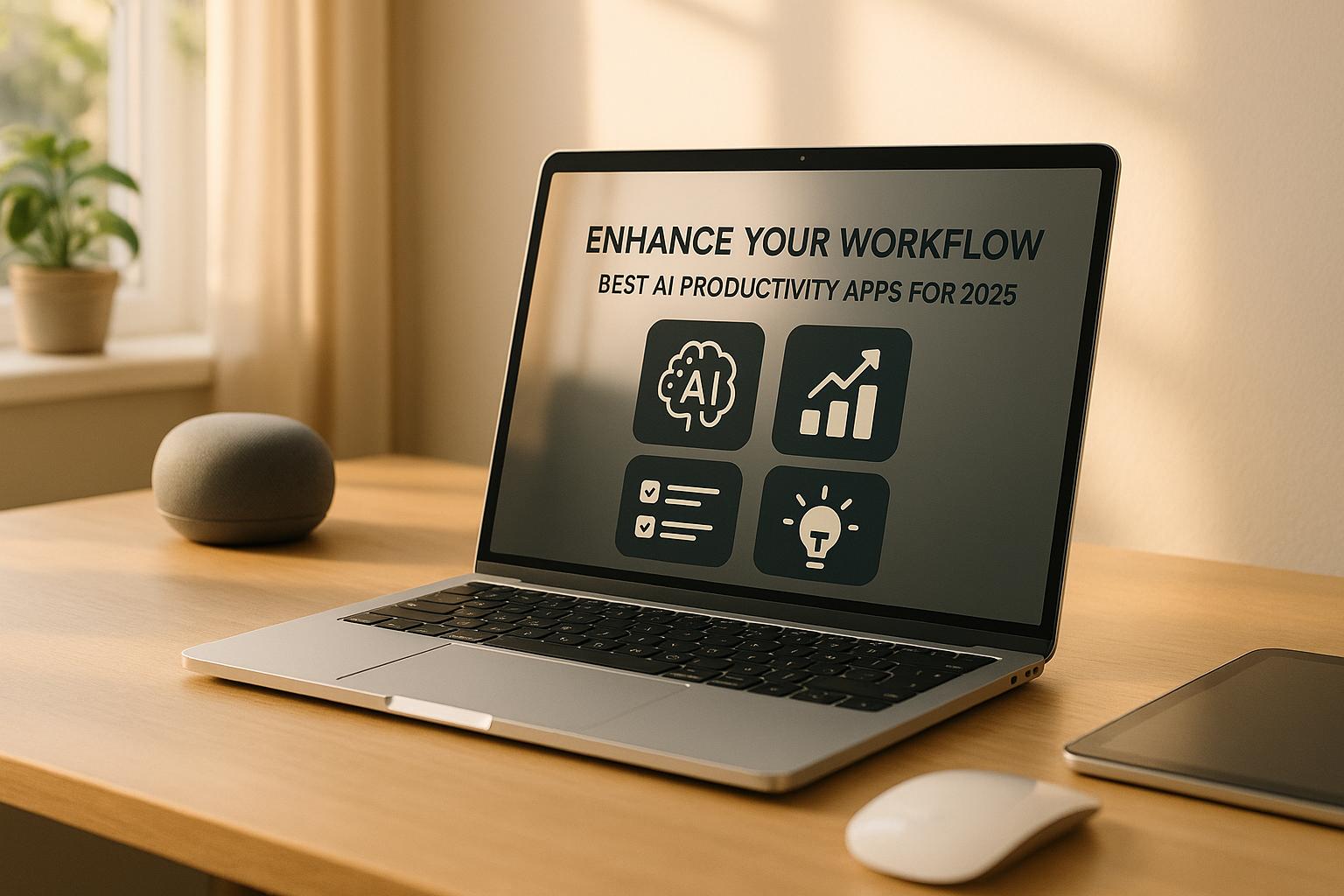AI tools are reshaping how businesses forecast sales. They analyze data, streamline processes, and detect risks, improving accuracy and decision-making. Here’s what to look for and the top tools available:
Key Features of AI Sales Prediction Tools:
- Real-Time Forecasting: Provides up-to-date predictions by analyzing live data.
- CRM Integration: Syncs seamlessly with existing systems to reduce manual input and improve data accuracy.
- Pipeline Visibility: Highlights deal progression and detects risks early.
Leading AI Tools:
- Clari: Excels in real-time forecasting, CRM integration, and pipeline inspection. Ideal for businesses needing detailed insights.
- Aviso: Offers advanced deal scoring and actionable recommendations based on hundreds of attributes.
- Gong: Focuses on conversation analytics to improve sales coaching and outcomes.
- Salesforce Einstein: Built into Salesforce, ideal for users of this ecosystem.
- People.ai: Tracks sales activities and provides team performance insights.
- Outreach: Combines sales engagement tracking with predictive analytics.
Quick Comparison:
| Tool | Key Strengths | Best For |
|---|---|---|
| Clari | Real-time updates, CRM sync | Detailed forecasting |
| Aviso | Actionable insights, scoring | Advanced deal analysis |
| Gong | Conversation analytics | Sales coaching |
| Salesforce Einstein | Native Salesforce integration | Salesforce users |
| People.ai | Activity tracking | Team performance optimization |
| Outreach | Engagement tracking | Interaction-focused forecasting |
To choose the right tool, align your business needs with each platform’s strengths. Pilot programs can help evaluate which AI solution fits your team best.
EP 53 | 10 Best Sales Forecasting Tools for 2025 | Outdoo Audio Blog #SalesPodcast #Podcast
Key Features to Look for in AI Sales Prediction Tools
When choosing AI sales prediction tools, some features can make a real difference in how effectively your sales team operates. The right tools don’t just predict - they help streamline processes and improve efficiency.
Real-Time Forecasting
Real-time forecasting is one of the most impactful features, especially for handling fast-paced sales cycles. Real-time data processing ensures that predictions are always current, unlike traditional methods that rely on outdated information.
This is particularly valuable during busy sales periods, where deal statuses can shift rapidly. With continuous updates, managers can make quick decisions - whether it’s reallocating resources or tweaking strategies. These tools pull data from multiple sources simultaneously, including email interactions, meeting notes, website visits, and even social media activity.
By bringing all this information together, real-time forecasting helps align sales efforts more closely with revenue objectives.
CRM Integration
CRM integration is another must-have feature, as it eliminates the issue of disconnected data. The best tools seamlessly pull information from existing systems, reducing the need for manual data entry.
But it doesn’t stop at syncing data. AI tools analyze CRM activity patterns to uncover what drives successful deals - tracking everything from how often customers are contacted to the kind of content shared with them during the sales process.
This integration ensures that your data is consistent and accurate, minimizing human error while giving the AI a complete picture for its predictions. It also enables automated workflows. For instance, when the AI spots a high-probability deal, it can automatically schedule follow-ups or alert account managers to prioritize specific prospects.
Pipeline Visibility and Risk Detection
Pipeline analytics provide sales teams with a clear view of how deals are progressing and highlight potential roadblocks. AI tools use historical data to predict which deals might stall, close quickly, or need extra attention.
Risk detection and predictive alerts are key to staying ahead of problems. By analyzing factors like deal size, sales cycle length, competitor involvement, and stakeholder engagement, the AI assigns risk levels and flags deals that might slip into the next quarter. This allows sales managers to act early rather than reacting after issues arise.
The tools also excel at identifying bottlenecks in the sales process. They can detect patterns, such as deals consistently stalling at a particular stage or certain prospects requiring longer nurturing. These insights help refine the entire sales pipeline, making it more efficient and effective.
With these features, AI sales prediction tools can provide the clarity and precision needed to elevate sales performance.
Top AI Tools for Sales Predictions
These platforms showcase how AI enhances core forecasting features, each offering a distinct approach. From cutting-edge machine learning to user-friendly designs tailored for sales teams, these tools bring a variety of strengths to the table. Here's a closer look at how they leverage AI to improve sales predictions.
Clari

Clari is a robust revenue operations platform that uses AI to deliver real-time sales forecasts with impressive precision. One of its standout features is activity-based forecasting, which reduces the need for manual updates by analyzing buyer engagement patterns. It tracks actions like email replies, meeting attendance, and document exchanges to assess momentum.
The platform also excels in pipeline inspection. Sales managers can dive deep into individual deals and understand why specific probability scores were assigned. Clari provides detailed explanations for its predictions, outlining the factors that influenced a deal's risk level or likelihood of closing - making pipeline management more transparent and actionable.
When it comes to CRM integration, Clari seamlessly connects with platforms like Salesforce and HubSpot. It automatically pulls data without requiring additional input from sales teams, ensuring accuracy and reducing administrative tasks.
Aviso

Aviso takes a unique approach with its contextual insights engine, which explains predictions using advanced deal scoring. By analyzing hundreds of deal attributes - such as deal velocity, stakeholder engagement, competitive factors, and historical trends - Aviso offers highly detailed closing probability forecasts.
But Aviso doesn’t stop at predictions. It provides actionable recommendations to improve deal outcomes. For example, it might suggest scheduling extra meetings with key stakeholders or sharing specific content based on patterns from successful deals.
Another strength of Aviso is its conversation intelligence. By analyzing sales calls and meetings, the platform extracts insights on buyer sentiment and deal progression. It can pinpoint pivotal moments in conversations that are linked to successful outcomes.
Other Top Tools
In addition to Clari and Aviso, several other platforms stand out for their AI-driven forecasting capabilities. Each tool brings something unique to the table, complementing the strengths of these two leaders.
- Gong: Specializes in conversation analytics, using real customer interactions to forecast outcomes. It identifies key talk tracks and behaviors that lead to successful deals, making it a valuable tool for sales coaching and refining processes.
- Salesforce Einstein: Built into the Salesforce ecosystem, Einstein uses the platform's vast data to generate predictions. Its seamless integration makes it an ideal choice for businesses already using Salesforce.
- People.ai: Focuses on revenue intelligence by automatically capturing and analyzing sales activities. It provides insights into team performance and highlights scalable best practices for the entire organization.
- Outreach: Merges sales engagement with predictive analytics, forecasting deal outcomes based on prospect interactions. It tracks metrics like email opens, clicks, responses, and meeting attendance to assess buyer interest and deal progression.
These tools showcase a variety of methods for AI-powered sales prediction, ranging from conversation analysis to activity tracking and statistical modeling. Choosing the right tool often depends on a company’s specific needs, existing tech stack, and desired level of forecasting detail.
sbb-itb-212c9ea
Comparison of AI Sales Prediction Tools
Selecting the best AI sales prediction tool requires a careful look at features, pricing, and how well it integrates with your existing systems. Below is a detailed comparison of several popular platforms, designed to help you make an informed choice.
Comparison Table Format
| Tool | Key Features | Integration Options | Pricing Structure | Pros | Cons |
|---|---|---|---|---|---|
| Clari | Activity-based forecasting, pipeline inspection, deal risk analysis, real-time updates | Salesforce, HubSpot, Microsoft Dynamics, Outreach | Custom pricing (contact vendor for details) | Provides clear AI insights, requires minimal manual input, integrates well with CRMs | Higher cost; setup can be complex for smaller teams |
| Aviso | Contextual insights engine, deal scoring, conversation intelligence, actionable recommendations | Salesforce, HubSpot, Microsoft Teams, Zoom | Custom pricing (contact vendor for details) | Excellent for deal analysis, offers predictive coaching and conversation insights | Steep learning curve; needs a lot of data |
| Gong | Conversation analytics, talk track identification, sales coaching insights, buyer sentiment analysis | Salesforce, HubSpot, Outreach, Chorus, Zoom, Microsoft Teams | Subscription-based pricing (contact vendor for details) | Best-in-class conversation analytics and coaching features | Limited focus on forecasting compared to specialized tools |
| Salesforce Einstein | Native Salesforce predictions, opportunity scoring, lead scoring, automated insights | Built into the Salesforce ecosystem; connects with Marketing Cloud | Subscription-based pricing as part of the Salesforce ecosystem | Integrates seamlessly with Salesforce; no need for additional data migration | Limited scope outside Salesforce; requires a Salesforce license |
| People.ai | Revenue intelligence, activity capture, performance analytics, best practice identification | Salesforce, HubSpot, Microsoft Dynamics, Gmail, Outlook | Custom pricing (contact vendor for details) | Tracks activities comprehensively and provides team performance insights | Geared more toward data capture than deep forecasting |
| Outreach | Sales engagement analytics, interaction tracking, sequence performance, deal progression | Salesforce, HubSpot, Microsoft Dynamics, LinkedIn Sales Navigator | Subscription-based pricing (contact vendor for details) | Strong engagement tracking to complement sales predictions | Focused more on engagement than forecasting |
Most tools offer either custom or subscription-based pricing, typically aimed at enterprise clients.
Integration options vary widely. Tools like Salesforce Einstein, embedded within the Salesforce ecosystem, are easy to set up but limited to that platform. On the other hand, third-party tools like Clari and Aviso provide broader integration options but may require additional technical resources to implement.
Feature depth also differs significantly. Some platforms, such as Clari, prioritize forecasting precision, while others, like Gong, focus on conversation analytics to enhance coaching and engagement.
Another key consideration is the amount of data required. Tools like Aviso perform best with a wealth of historical data, making them ideal for well-established sales teams. Meanwhile, platforms that demand less data may be better suited for smaller organizations or those just starting to leverage AI in sales.
Ultimately, aligning the tool's strengths with your specific business needs is crucial to getting the most out of these platforms.
How to Select the Right AI Sales Prediction Tool
Choosing the right AI sales prediction tool can significantly improve the accuracy of your forecasts. Instead of chasing the latest features, take a structured approach that focuses on addressing your specific sales challenges. Here's a guide to help you find the best solution for your team.
Define Business Objectives
Begin by identifying the main sales issues you’re trying to resolve. Are your forecasts consistently off the mark? Is pipeline visibility lacking? Or do you struggle to pinpoint at-risk deals? Different tools are designed to tackle different problems, so understanding your priorities will help you avoid investing in a tool that doesn’t align with your needs.
Make sure the tool’s capabilities fit your business size, data quality, and team structure. This alignment is crucial to avoid unnecessary costs or inefficiencies.
Evaluate Integration and Scalability
Once you've reviewed essential features like CRM integration and real-time updates, focus on how well the tool can adapt to your future needs. Seamless CRM integration is non-negotiable - whether you’re using Salesforce, HubSpot, or another platform. Some tools offer deeper forecasting capabilities for specific CRMs, so choose one that complements your existing setup.
Scalability is equally important. A tool that works for a small team might not perform as well for a larger or geographically dispersed workforce. Look for platforms with flexible pricing and features that can grow alongside your business, ensuring they won’t strain your IT resources as you expand.
Don’t overlook data security. Ensure the platform supports role-based permissions and integrates seamlessly with your existing security protocols. For companies with strict data governance policies, consider tools that offer on-premise deployment options.
Consider Pricing and Compliance
Obtain detailed pricing quotes, including any hidden fees, and verify that the tool complies with U.S. standards like SOC 2 Type II. If your business operates in regulated industries, check for certifications like HIPAA or SOX.
Pay close attention to per-user pricing, as costs can escalate quickly with team growth. Calculate expenses based on your projected team size over the next year or two, and ask about volume discounts or tiered pricing that could make enterprise-level solutions more affordable.
Examine contract terms carefully, especially regarding data ownership and export options. You’ll want the flexibility to retrieve your data easily if you ever decide to switch platforms.
Finally, factor in return on investment (ROI). Before implementing a tool, establish baseline metrics such as forecast accuracy, deal velocity, and sales productivity. This will help you measure the tool’s impact and justify your investment.
Testing tools through pilot programs can be incredibly helpful. Use trial periods with a subset of your team to identify potential integration or adoption challenges. This hands-on evaluation will make it easier to narrow down options like Clari, Aviso, and others mentioned earlier, ensuring you make an informed decision.
Conclusion
AI-driven sales prediction tools have transformed the way businesses approach revenue forecasting, offering real-time insights that far surpass traditional methods. The best tools combine features like CRM integration, pipeline visibility, and risk detection to deliver precise predictions that empower smarter decision-making.
Take Clari, for example - it uses activity-based insights to enhance forecasting accuracy. Meanwhile, Aviso leverages advanced algorithms to provide highly detailed predictions. Both platforms excel in offering key functionalities such as seamless CRM integration, automated data analysis, and actionable insights, ensuring sales teams can anticipate and address potential challenges effectively.
The key to success lies in selecting a tool that aligns with your business goals, integrates smoothly with your existing systems, and can grow alongside your organization.
For U.S. businesses exploring their options, AI Apps is a helpful resource. It’s a centralized platform where you can browse and compare over 1,000 AI tools, including sales prediction solutions. With advanced filtering options, you can easily narrow your search by category, pricing, or specific features, saving time and effort while ensuring you make a well-informed decision.
Whether you're running a small business looking for straightforward forecasting or managing an enterprise with complex revenue operations, the right AI sales prediction tool can significantly enhance your accuracy and sales outcomes. Before committing to a solution, consider piloting it to ensure it meets your needs.
FAQs
How do AI tools make sales forecasts more accurate than traditional methods?
AI tools are transforming sales forecasting by uncovering intricate patterns in massive datasets and updating predictions in real-time. Traditional methods often depend on historical trends and manual tweaks, but AI takes it a step further. Using machine learning, it analyzes dynamic factors like shifts in the market, customer behaviors, and economic conditions, leading to much sharper predictions.
With automated updates and less room for human bias, AI can achieve forecast accuracy rates of over 90%. This means businesses can move beyond guesswork, make smarter decisions, and adapt quickly to changing market demands - all of which pave the way for stronger results.
What should businesses look for in an AI tool to ensure it meets their sales forecasting needs?
When choosing an AI tool for sales forecasting, it's essential to consider how well it works with your current CRM systems and other tools. A smooth integration means less hassle and ensures the tool can make the most of your existing setup. Also, the tool should be able to process accurate, high-quality sales data to provide reliable forecasts.
Think about whether the tool can grow with your business, how well it fits your specific industry needs, and if it can manage large datasets effectively. These aspects are key to finding a solution that supports your sales processes and aligns with your long-term plans.
How do AI tools work with CRM systems to improve sales predictions, and what are the key benefits?
AI tools work hand-in-hand with CRM systems, using machine learning, predictive analytics, and natural language processing to dig into customer behavior, sales patterns, and market trends. This partnership enables sales teams to make sharper forecasts, automate mundane tasks, and tap into actionable insights instantly.
Here’s how businesses benefit:
- Streamlined workflows: Automating data analysis and routine tasks saves time and boosts productivity.
- Enhanced customer understanding: Pinpoint high-potential leads and customize strategies to fit their needs.
- Better sales strategies: Accurate revenue predictions lead to smarter planning and informed decisions.
This synergy helps businesses stay competitive while fine-tuning their sales operations for maximum impact.



